While working on a physics project at school physics, lab, you require a 4 μF capacitor in a circuit across a potential difference of 1 k V. Unfortunately, 4 μF capacitors are out or stock in your lab but 2 μF capacitors which can withstand a potential difference of 400 V are available in plenty . if you decide to use the 2 μF capacitors in place of 4μ F capacitor minimum number of capacitors required are
16
18
20
12
The correct Answer is:B
To solve the problem of how many 2 µF capacitors are needed to replace a 4 µF capacitor while ensuring they can withstand a potential difference of 1000 V, we can follow these steps:
Step 1: Determine the Required Voltage Rating
The 4 µF capacitor needs to withstand a potential difference of 1000 V. Since the 2 µF capacitors can only withstand 400 V each, we need to connect them in series to increase the voltage rating.
Step 2: Calculate the Number of Capacitors in Series
To find out how many 2 µF capacitors are needed in series to withstand at least 1000 V, we can set up the equation:
Total Voltage=n×Vmax
Where:
- n = number of capacitors in series
- Vmax=400V
We need:
n×400V≥1000V
Solving for n:
n≥1000V400V=2.5
Since n must be a whole number, we round up to the next whole number:
n=3
Thus, we need at least 3 capacitors in series to withstand the required voltage.
Step 3: Calculate the Equivalent Capacitance
When capacitors are connected in series, the equivalent capacitance Ceq is given by:
1Ceq=1C1+1C2+1C3
For three 2 µF capacitors:
1Ceq=12+12+12=32
Thus:
Ceq=23μF
Step 4: Determine How Many Sets of Series Capacitors are Needed
Now, we need to create an equivalent capacitance of 4 µF using the equivalent capacitance of the series connection. We can connect these series groups in parallel.
Let x be the number of series connections needed:
Ctotal=Ceq×x=4μF
Substituting Ceq:
23μF×x=4μF
Solving for x:
x=4μF×32=6
Conclusion
Therefore, the minimum number of 2 µF capacitors required is:
Total Capacitors=3(in series)×6(sets)=18
Final Answer
The minimum number of 2 µF capacitors required is 18.
---
The 4 µF capacitor needs to withstand a potential difference of 1000 V. Since the 2 µF capacitors can only withstand 400 V each, we need to connect them in series to increase the voltage rating.
To find out how many 2 µF capacitors are needed in series to withstand at least 1000 V, we can set up the equation:
Total Voltage=n×Vmax
Where:
- n = number of capacitors in series
- Vmax=400V
n×400V≥1000V
Solving for n:
n≥1000V400V=2.5
Since n must be a whole number, we round up to the next whole number:
n=3
Thus, we need at least 3 capacitors in series to withstand the required voltage.
When capacitors are connected in series, the equivalent capacitance Ceq is given by:
1Ceq=1C1+1C2+1C3
For three 2 µF capacitors:
1Ceq=12+12+12=32
Thus:
Ceq=23μF
Now, we need to create an equivalent capacitance of 4 µF using the equivalent capacitance of the series connection. We can connect these series groups in parallel.
Ctotal=Ceq×x=4μF
Substituting Ceq:
23μF×x=4μF
Solving for x:
x=4μF×32=6
Therefore, the minimum number of 2 µF capacitors required is:
Total Capacitors=3(in series)×6(sets)=18
The minimum number of 2 µF capacitors required is 18.
Topper's Solved these Questions
- ELECTROSTATIC POTENTIAL AND CAPACITANCE BOOK - AAKASH INSTITUTECHAPTER - ELECTROSTATIC POTENTIAL AND CAPACITANCE EXERCISE - ASSIGNMENT SECTION - C
53 Videos
- ELECTROSTATIC POTENTIAL AND CAPACITANCE BOOK - AAKASH INSTITUTECHAPTER - ELECTROSTATIC POTENTIAL AND CAPACITANCE EXERCISE - ASSIGNMENT SECTION - D
13 Videos
- ELECTROSTATIC POTENTIAL AND CAPACITANCE BOOK - AAKASH INSTITUTECHAPTER - ELECTROSTATIC POTENTIAL AND CAPACITANCE EXERCISE - ASSIGNMENT SECTION - A
47 Videos
- ELECTROMAGNETIC WAVESBOOK - AAKASH INSTITUTECHAPTER - ELECTROMAGNETIC WAVESEXERCISE - ASSIGNMENT SECTION - D Assertion-Reason Type Questions
25 Videos
- GRAVITATION BOOK - AAKASH INSTITUTECHAPTER - GRAVITATION EXERCISE - ASSIGNMENT SECTION - D (ASSERTION-REASON TYPE QUESTIONS)
16 Videos
Similar Questions
An electrical technician requires a capacitance of 2μF in a circuit across a potential difference of 1 kV. A large number of 1μF capacitors are available to him each of which can withstand a potential difference of not more than 400 V. Suggest a possible arrangement that requires the minimum number of capacitors.
View SolutionFind out the potentail difference across the plates of 1μF capacitors in Fig.
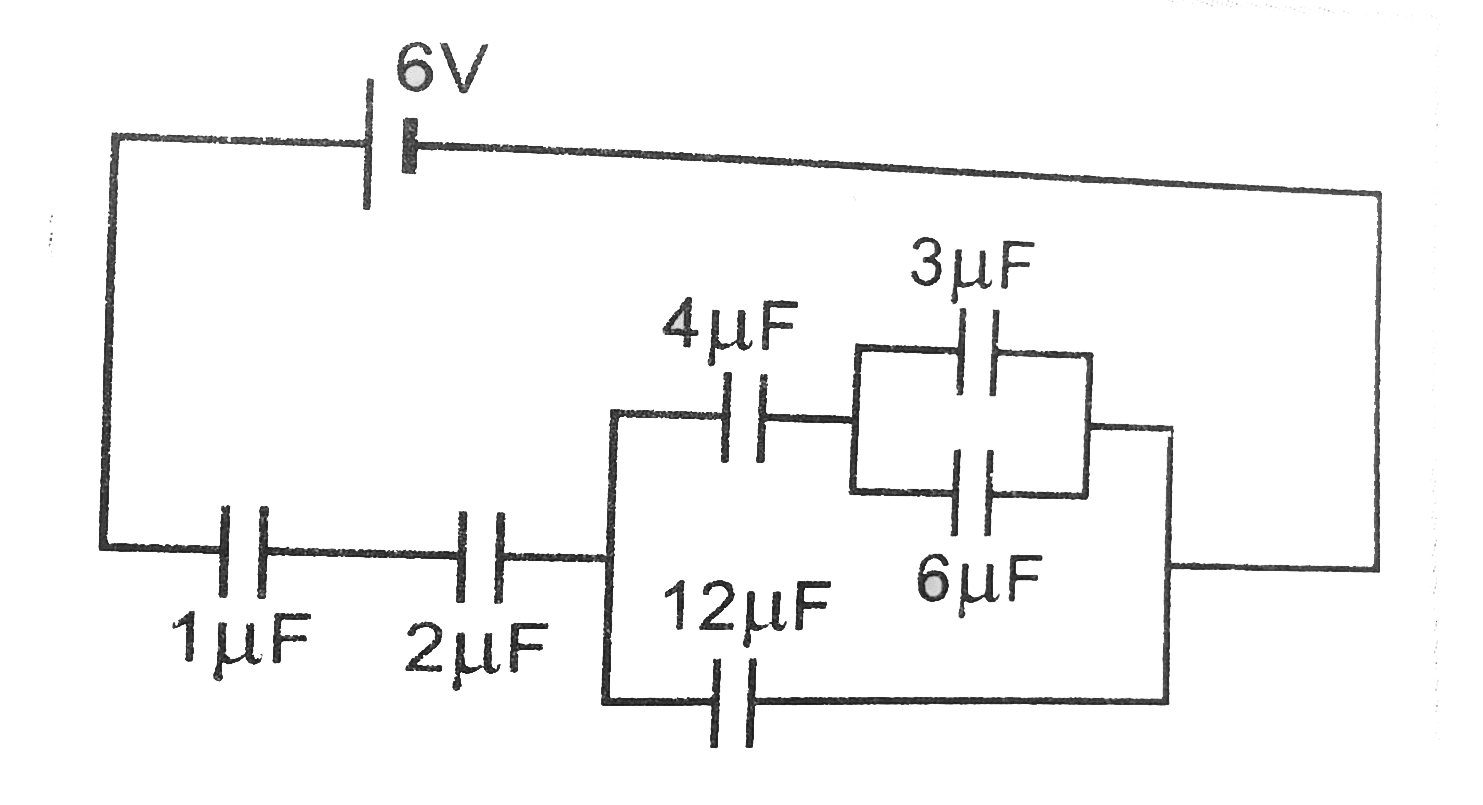
View Solution
Knowledge Check
While working on a physics project at school physics lab, you required 4μF capacitor in a circuit across a potential difference of 1 kV. Unfortunately, 4μF capacitors are out of stock in your lab but 2μF capacitors which can withstand a potential difference of 400 V are available in plenty . If you decide to use the 2μF capacitors in place of 4μF capacitor , minimum number of capacitors required are
A16B18C20D12A capacitance of 2μF is required in an electrical circuit across a potential difference of 1.0kV A large number of 1μF capacitors are available which can withstand a potential difference of not more than 300v.
The minimum number of capacitors required to achieve this isA32B2C16D24In given circuit, ratio of charge on 2 μF capacitor to the charge of 3 μ F capacitor will be
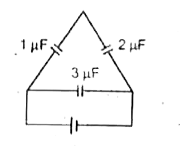 A2:3B3:2C1:9D2:9
A2:3B3:2C1:9D2:9
In the circuit shown in the following the potential difference across the 3μF capacitor is
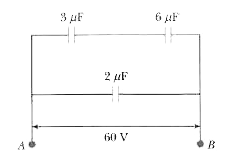
View SolutionIn the circuit shown , charge on the 5μF capacitor is :
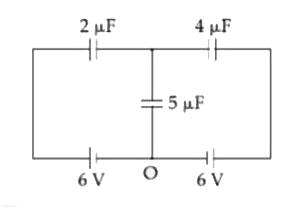
View SolutionFind charge of 4μF capacitor in steady state.
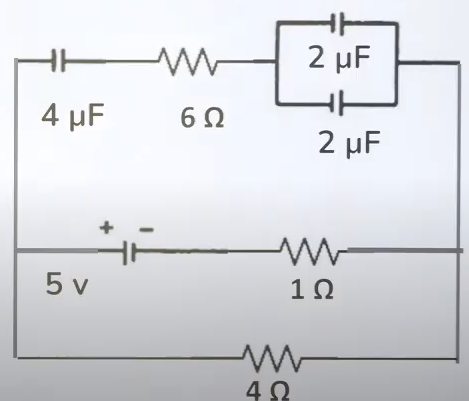
View SolutionIn the circuit shown in the figure, the potential difference across the 4.5μF capacitor is
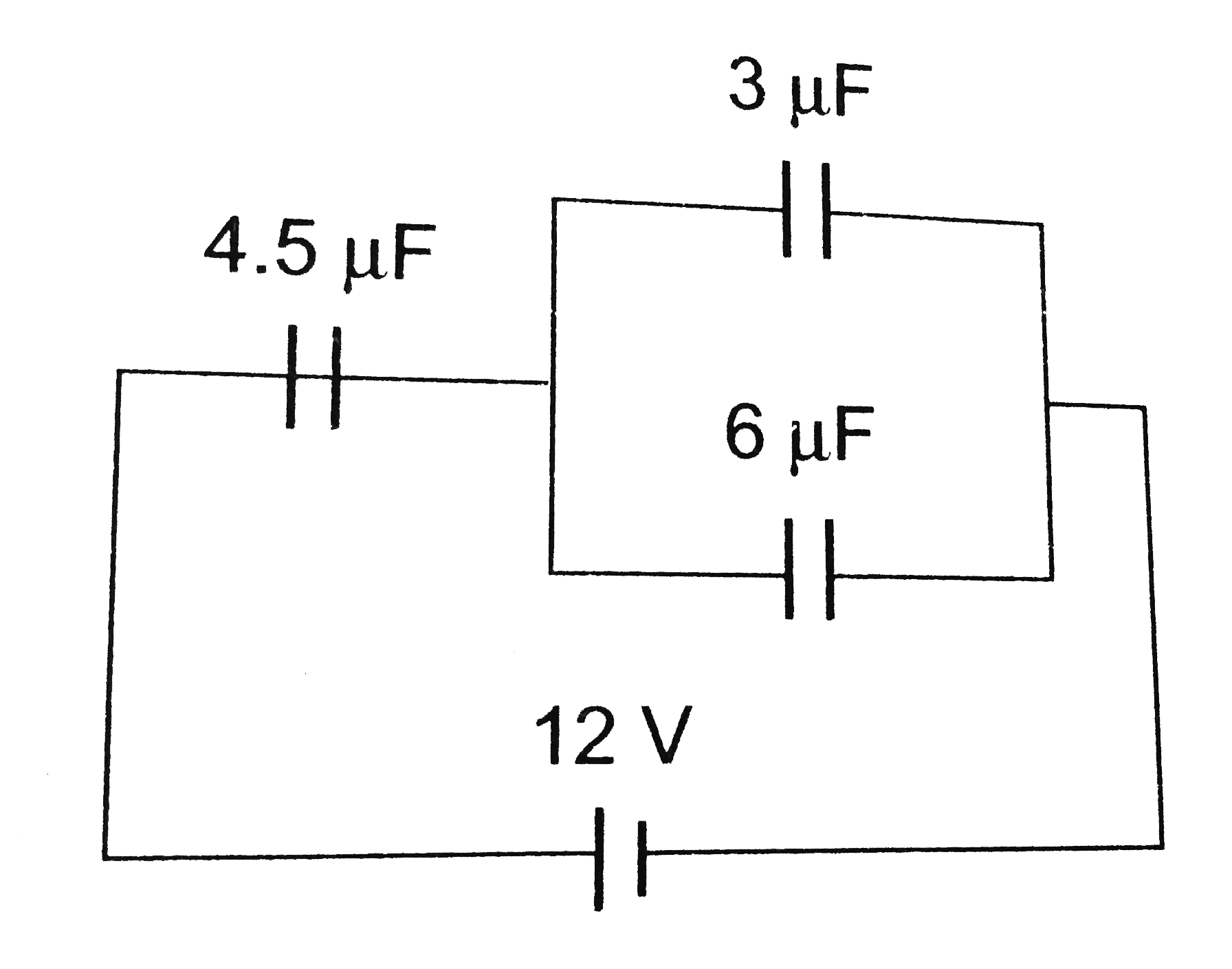
View SolutionThe charge on the 6 μF . Capacitor in the circuit shown is
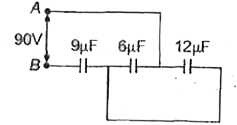
View Solution
